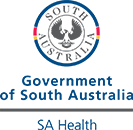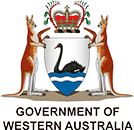Healthdirect Australia is not responsible for the content and advertising on the external website you are now entering.
Nurofen for Children 3 Months to 5 Years TM
You should seek medical advice in relation to medicines and use only as directed by a healthcare professional. Always read the label. If symptoms persist see your healthcare professional.
Active ingredients: ibuprofen
Brand name
(ARTG)
: NUROFEN FOR CHILDREN 3 MONTHS - 5 YEARS strawberry flavour ibuprofen 100mg/5mL suspension bottle (new)What this medicine is used for
(ARTG)
Suitable for the temporary relief of pain and discomfort in children aged 3 months to 12 years with the following conditions: juvenile chronic arthritis, pyrexia including fever caused by immunisation, acute conditions associated with pain and/or inflammation such as teething, toothache, earache, headache, colds and flu, minor aches, sprains and strains and sore throats, and chronic conditions associated with pain and/or inflammation.
How to use this medicine
(ARTG)
This medicine contains one component only.
Component :
- Oral Liquid, suspension
- Oral
- An off white strawberry flavoured, syrupy suspension
Storage conditions
(ARTG)
- Store below 25 degrees Celsius
- Shelf lifetime is 2 Years.
Do I need a prescription ?
(ARTG)
The packs below are available from a pharmacy without prescription. It is
- 100mL pack
- 150mL pack
- 2 x 200mL value pack pack
- 200mL pack
- 50mL pack
Over 65 ?
(AHT)
This medicine contains the active ingredients:
If you are over 65 years of age, there may be specific risks and recommendations for use of this medicine. Please discuss your individual circumstances with your pharmacist, doctor or health professional. For more information read our page on medication safety for older people.
Pregnant or planning a pregnancy ?
(AHT)
For the active ingredient ibuprofen
You should seek advice from your doctor or pharmacist about taking this medicine. They can help you balance the risks and the benefits of this medicine during pregnancy.
Reporting side effects
You can help ensure medicines are safe by reporting the side effects you experience.
You can report side effects to your doctor, or directly at www.tga.gov.au/reporting-problems
Need more information?
These trusted information partners have more on this topic.
Top results
Baby language development: 3-12 months | Raising Children Network
At 3-12 months, there’s a lot happening with baby language development. Expect your baby to coo, laugh, play with sounds, babble and gesture. Read more.
Read more on raisingchildren.net.au website

Managing screen time: children 3-11 years | Raising Children Network
Screen time management strategies include rules, routines, transitions and choices. These strategies help you guide children towards healthy screen habits.
Read more on raisingchildren.net.au website

How your baby learns - birth to 3 years
Find out how your baby learns and develops from birth to 3 years.
Read more on Pregnancy, Birth & Baby website

For infants, toddlers and preschoolers (birth to 5 years) | Australian Government Department of Health and Aged Care
Being active is important for babies and young children to grow healthy, and sets good habits for life. Read about how much activity small children should do each day, limiting sitting time, avoiding screens, and making sure they get enough sleep.
Read more on Australian Government Department of Health and Aged Care website

What is the fourth trimester?
The fourth trimester is the first 3 months after having your baby. Learn how to prepare yourself and your baby for the physical and emotional changes.
Read more on Pregnancy, Birth & Baby website

Language development: children 0-8 years | Raising Children Network
Language development underpins cognitive, social and literacy development. A lot of talking, responding and reading with you helps your child learn language.
Read more on raisingchildren.net.au website

Helping your baby grow from 0 to 5 years
Understanding how your baby grows is important for all parents. Supporting your child will help set them up for a happy and sucessful future.
Read more on Pregnancy, Birth & Baby website

Why does my child need a flu shot? | Sharing Knowledge About Immunisation | SKAI
Why does my child need a flu shot? Key facts Children and babies aged six months or older need to get an influenza vaccine every year
Read more on National Centre for Immunisation Research and Surveillance (NCIRS) website

Why does my child need a flu shot? | Sharing Knowledge About Immunisation | SKAI
Why does my child need a flu shot? Key facts Children and babies aged six months or older need to get an influenza vaccine every year
Read more on National Centre for Immunisation Research and Surveillance (NCIRS) website

School years - Growing up - Services Australia
Find out about moving from child care to primary and then secondary school. You can also find information about home schooling and mutual obligation requirements.
Read more on Centrelink website

Top results
Do interventions in families prevent children and adolescents from starting to smoke | Cochrane
Authors' conclusions: There is moderate quality evidence to suggest that family-based interventions can have a positive effect on preventing children and adolescents from starting to smoke
Read more on Cochrane Australia website

RSV Guide - Immunisation Coalition
About RSV Cause And Transmission How Is RSV Treated? RSV Prevention Pharmaceutical Interventions RSV In Young Children RSV In Adults Download the Guide pdf About RSV Respiratory syncytial virus (RSV) is a common virus that infects the airways and lungs
Read more on Immunisation Coalition website

Ketogenic diets for drug-resistant epilepsy | Cochrane
Authors' conclusions: The evidence suggests that KDs could demonstrate effectiveness in children with drug-resistant epilepsy, however, the evidence for the use of KDs in adults remains uncertain
Read more on Cochrane Australia website

Otitis Media in First Nations Peoples | Ausmed
Otitis media is an umbrella term encompassing all types of inflammation and infection of the middle ear, which is the air-filled, membrane-lined cavity located behind the eardrum. Aboriginal and Torres Strait Islander children, who have the highest rate of middle ear disease in the world.
Read more on Ausmed Education website

Understanding and Assessing 'Failure' to Thrive | Ausmed
Failure to thrive (FTT), also known as faltering growth or poor growth, describes a pattern of poor weight gain in children. FTT describes children under the age of two whose weight, or rate of weight gain, is considerably lower than what is expected for other children of the same age and gender.
Read more on Ausmed Education website

Meningococcal Disease | Ausmed
Meningococcal disease is a highly uncommon illness, which according to the most recent available data, only affects 0.8 people per 1,000,000 in Australia. Despite its rarity, meningococcal disease is a medical emergency with a 5 to 10% mortality rate and requires immediate diagnosis and treatment.
Read more on Ausmed Education website

Early Menopause due to Chemotherapy and Radiotherapy - Australasian Menopause Society
Premature ovarian insufficiency (POI)/ failure (premature menopause) is loss of ovarian function before age 40 years. Early menopause is menopause before age 45 years. Chemotherapy/ radiotherapy causes POI due to impaired follicular maturation and/or direct primordial follicle loss. The extent of damage depends on the age and pre-treatment ovarian reserve of the woman, type of drug or radiation field and cumulative dose.
Read more on Australasian Menopause Society website

COVID-19 vaccines and cardiac inflammation | Australian Government Department of Health and Aged Care
Cases of myocarditis and pericarditis after COVID-19 vaccines are rare: mostly reported in males under 40 years of age, after the second dose. Cases do occur in both females and males, at any age, and after any dose, including a third or fourth dose. Most cases are mild and patients recover quickly.
Read more on Australian Government Department of Health and Aged Care website

Influenza Guide - Immunisation Coalition
About Influenza Influenza And The NIP Timing Of Vaccinations 2025 Influenza Vaccines Available For Use In Australia Influenza And COVID-19 Influenza And Pregnancy Influenza And Children Enhanced Influenza Vaccines For Older People Influenza and Heart Attacks Co-Administration With Other Vaccines Download the Guide pdf About Influenza Influenza is a potentially fatal disease that is estimated to cause up to 100 deaths and 5,100 hospitalisations in Australia annually
Read more on Immunisation Coalition website

Pertussis Guide for Health Care Professionals - Immunisation Coalition
Pertussis is a highly contagious bacterial infection affecting the respiratory system, that can cause severe illness and death.
Read more on Immunisation Coalition website










